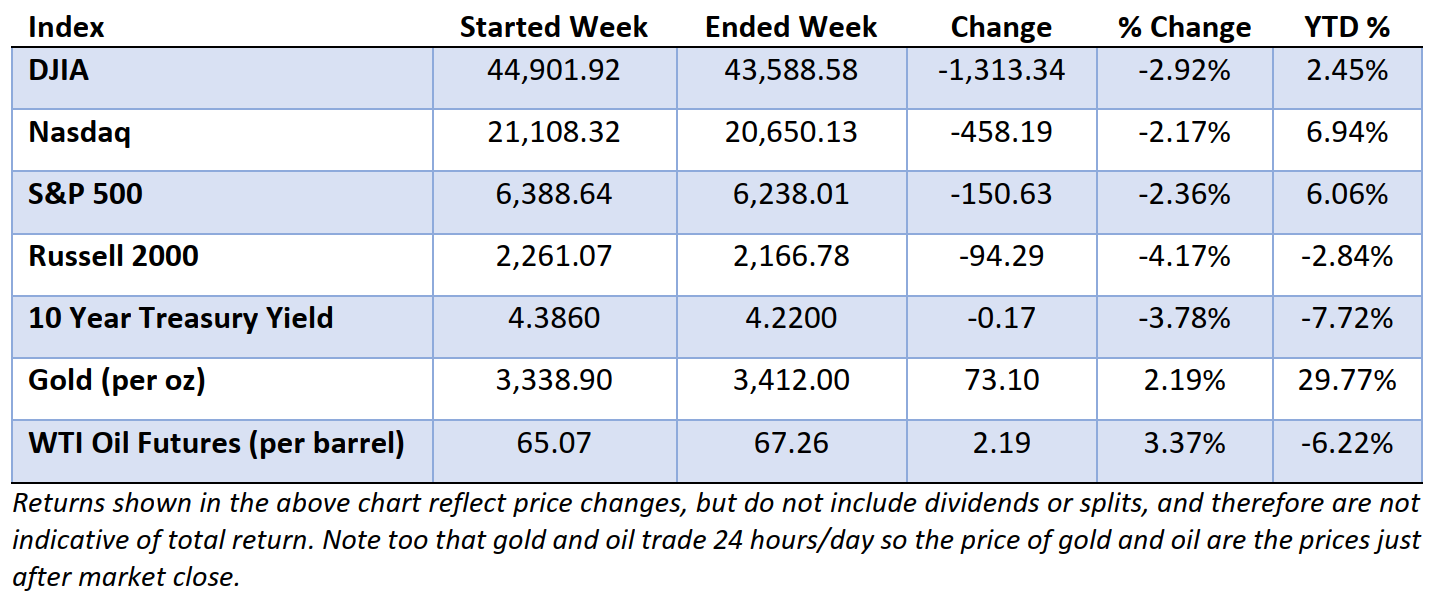August 2, 2025, Market Update
The stock market was humming along until the release of July’s jobs report on Friday morning, which delivered the weakest monthly hiring in over a decade outside of the pandemic. Nonfarm payrolls rose by just 73,000, well below forecasts of around 100,000, and downward revisions to earlier estimates were dramatic. The resulting sell-off was broad, with growth and economically sensitive sectors leading the declines. Defensive areas such as utilities and gold outperformed, while technology and small-cap shares saw the sharpest losses.
By contrast, bond markets posted gains, with yields falling sharply following Friday’s disappointing news. The two-year Treasury yield dropped to its lowest level in more than two years as traders increased bets on a September interest rate cut. Longer-term yields also moved lower, reflecting stronger demand for high-quality fixed income assets in the wake of the weaker economic data.
With many stocks and major indexes trading at or near all-time highs, markets remain vulnerable to further shocks to the system. So far, the disruption has been relatively modest but that could change in a heartbeat.

While Friday’s jobs report had the greatest impact, there were several other important developments last week, including Thursday’s GDP report that estimated the U.S. economy expanded at a 2.4% annualized pace in the second quarter, stronger than expected. But a closer look revealed signs of cooling beneath the surface. Final sales to private domestic purchasers, a closely watched gauge of underlying demand, rose just 1.2 percent — the slowest pace since late 2022.
Then there’s the June PCE report, which showed core inflation rising just 0.1 percent in June and running at a 1.9 percent annualized pace over the past three months. That is below the Fed’s 2 percent target and reinforces the view that inflation pressures are easing, giving policymakers more room to begin lowering rates.
If the Fed does begin lowering rates, bond prices could rise, especially for longer-term and high-quality bonds. With many stocks still trading at or near all-time highs, this may be a timely opportunity for investors to reduce equity exposure and increase allocations to bonds and other investments that tend to be less correlated with stocks.
That’s all for now. Have a great weekend and invest wisely my friends.
